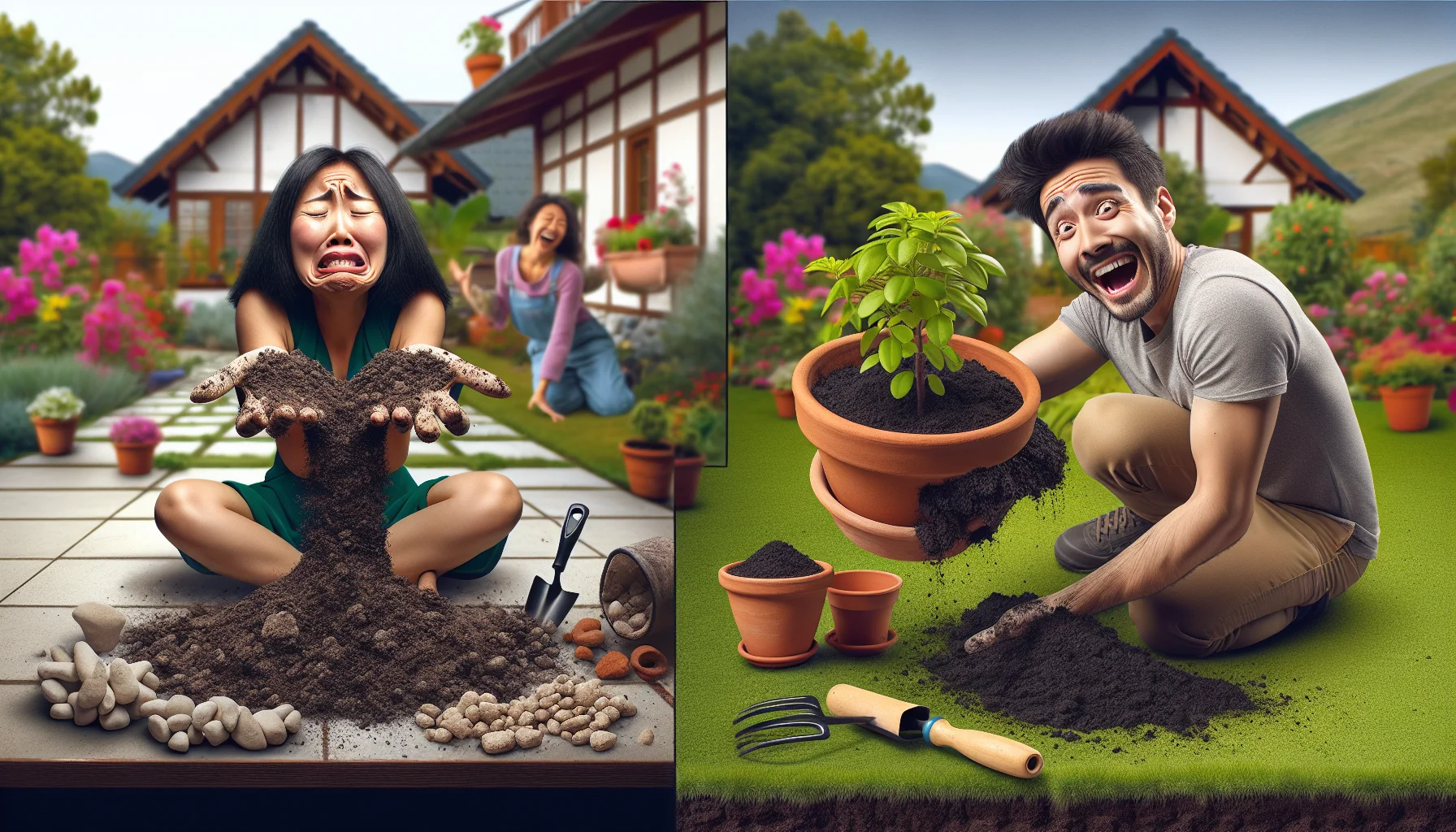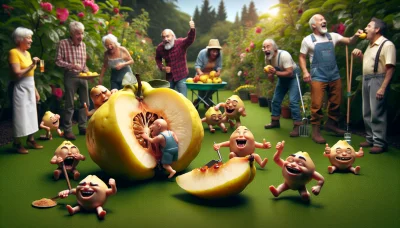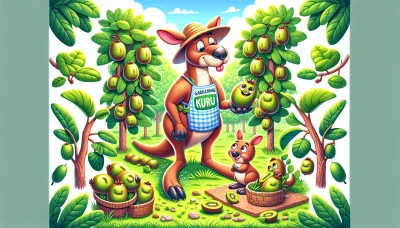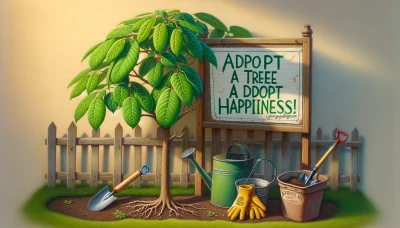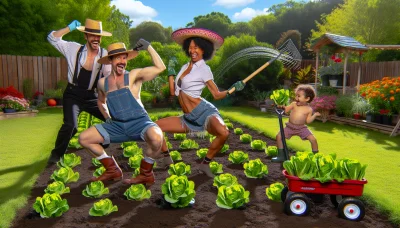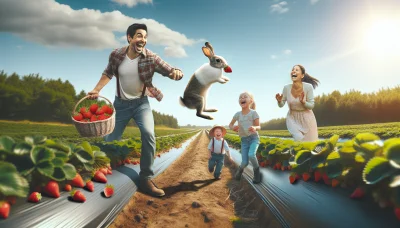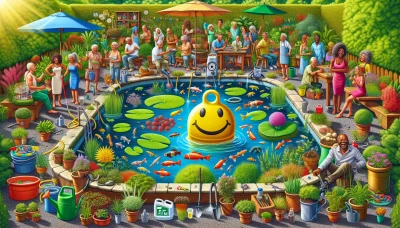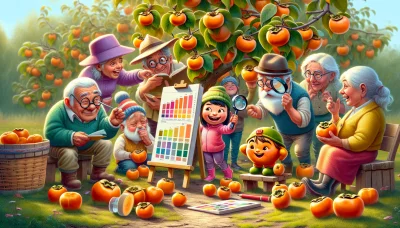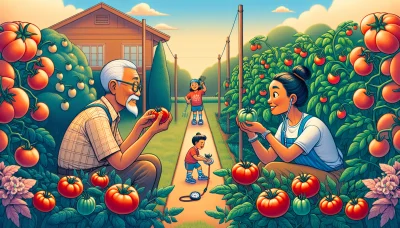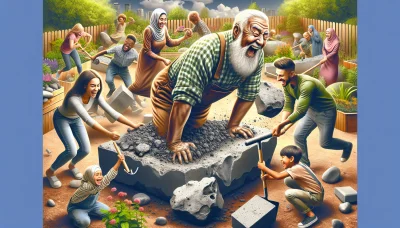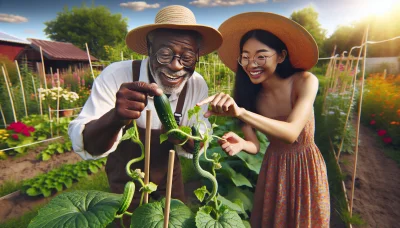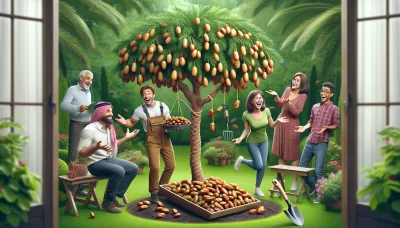Difference between potting soil and garden soil Quiz
Test Your Knowledge
Question of
Understanding the Difference Between Potting Soil and Garden Soil
Choosing the right type of soil is a critical step in achieving gardening success. Whether you're cultivating a lush garden outdoors or nurturing potted plants indoors, understanding the distinct characteristics and benefits of potting soil and garden soil can significantly influence the health and growth of your plants. This introduction aims to shed light on the key differences between these two types of soil, helping gardeners make informed decisions for their green endeavors.
What is Potting Soil?
Potting soil, also known as potting mix, is a medium designed to promote the healthy growth of plants in containers. Unlike regular garden soil, potting soil is free from soilborne pathogens and weed seeds. Its composition typically includes a blend of peat moss, compost, vermiculite or perlite, and sometimes sand, which together provide a balance of moisture retention, aeration, and drainage. This specialized mix supports root growth and helps retain nutrients that plants need to thrive. Potting soil is beneficial for almost all types of container gardening, from indoor houseplants to outdoor potted flowers and vegetables. Its lightweight and nutrient-rich nature makes it an ideal choice for supporting the diverse needs of plants in confined growing environments.
What is Garden Soil?
Garden soil is a rich, organic material that is specifically formulated to support plant growth in outdoor gardens. It typically consists of a blend of compost, topsoil, and other organic matter such as peat moss, vermiculite, or perlite. This combination creates a nutrient-dense environment that promotes healthy root development and robust plant growth. One of the main advantages of using garden soil is its ability to retain moisture while also providing proper drainage, ensuring that plants receive the right balance of water and air. Additionally, garden soil is often enriched with essential nutrients and minerals that are vital for plant health, including nitrogen, phosphorus, and potassium. Common applications of garden soil include vegetable gardens, flower beds, and landscaping projects, where it serves as a foundational element that supports a wide variety of plants, from annuals and perennials to shrubs and trees.
Key Differences Between Potting Soil and Garden Soil
- Drainage: Potting soil is designed to allow better drainage than garden soil, which can often retain more water and become compacted.
- Nutrient Content: Potting soil is often enriched with nutrients to support plant growth in containers, whereas garden soil may need additional amendments to achieve the same nutrient levels.
- Weight: Potting soil is generally lighter and more porous than garden soil, making it ideal for use in containers where weight and air circulation are considerations.
- Best Use Scenarios: Potting soil is best used for indoor plants, container gardening, and starting seeds, while garden soil is better suited for outdoor gardens and landscaping projects.
Choosing the Right Soil for Your Plants
Selecting the right soil for your plants is a crucial step in ensuring their health and growth. Different plants have unique soil requirements based on their native habitats and specific needs. For instance, succulents thrive in well-draining sandy soil, while orchids prefer a loose, bark-based mix. It's important to research the specific needs of your plants or consult with a gardening expert. Additionally, consider the soil's pH level and nutrient content, as these factors greatly influence plant health. Whether you're embarking on a vegetable garden project or cultivating indoor houseplants, choosing the appropriate soil type will set the foundation for your gardening success.
How to Improve Your Soil
To enhance the quality of your potting soil or garden soil, it's crucial to focus on amendments and fertilization strategies that cater to the specific needs of your plants. Start by testing your soil to understand its current condition, including pH level and nutrient content. For nutrient-poor soils, incorporating organic matter such as compost, manure, or leaf mold can significantly improve soil fertility and structure. This not only adds essential nutrients but also improves drainage and water retention. Additionally, consider using mulch to help maintain moisture levels and suppress weeds. When it comes to fertilization, opt for slow-release or organic fertilizers that provide a steady supply of nutrients to your plants over time. Regularly amending your soil and adopting a thoughtful fertilization plan will lead to healthier, more productive plants.
FAQs on Potting Soil and Garden Soil
| Question | Answer |
|---|---|
| Can potting soil be used in garden beds? | Yes, potting soil can be used in garden beds, but it's often more expensive than garden soil and may not provide the best structure for in-ground plants over time. |
| How often should garden soil be replaced? | Garden soil doesn't necessarily need to be completely replaced. Instead, it should be amended with compost or other organic matter annually to maintain its fertility and structure. |
| Is garden soil the same as topsoil? | No, garden soil is a blend designed for planting beds and often contains compost or other amendments. Topsoil is the uppermost layer of the earth's surface and can vary widely in quality and composition. |
| Can I mix potting soil with garden soil? | Yes, mixing potting soil with garden soil can improve drainage and aeration in heavy, compacted soils. It can also add nutrients and structure to the soil. |
| Why is potting soil recommended for containers? | Potting soil is specifically formulated to provide the proper drainage and aeration required for container plants. It often contains peat moss, vermiculite, or perlite to help keep the soil light and prevent compaction. |
| How can I tell if my garden soil is healthy? | Healthy garden soil should be loose and crumbly, not compacted. It should have a rich, earthy smell and a dark color, indicating the presence of organic matter. You can also have your soil tested for nutrient levels and pH. |
